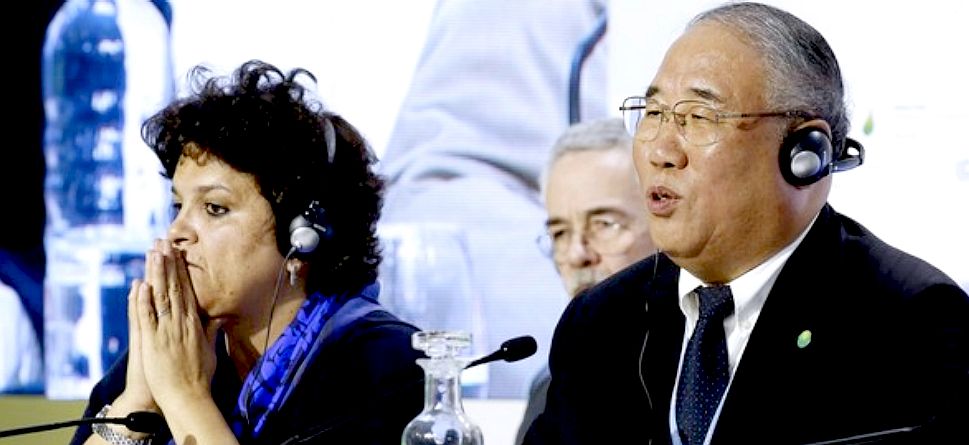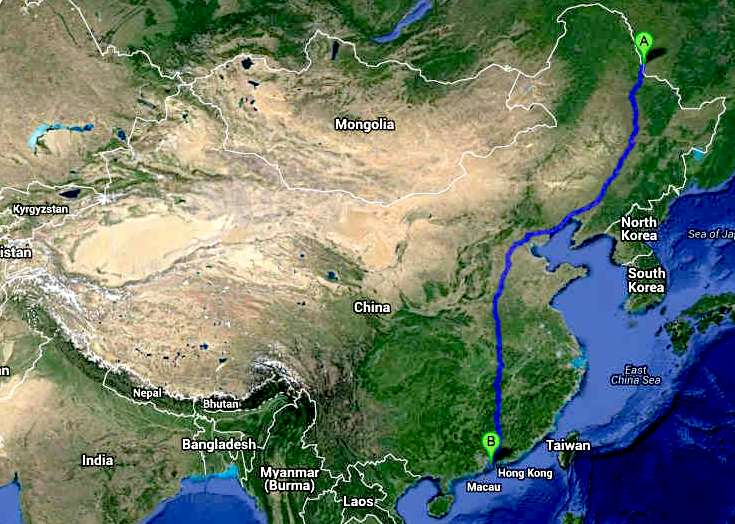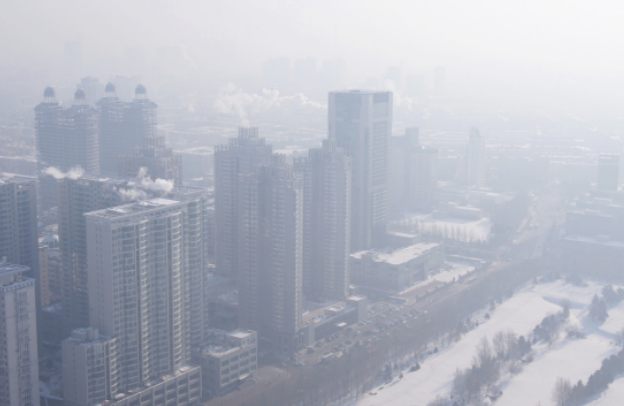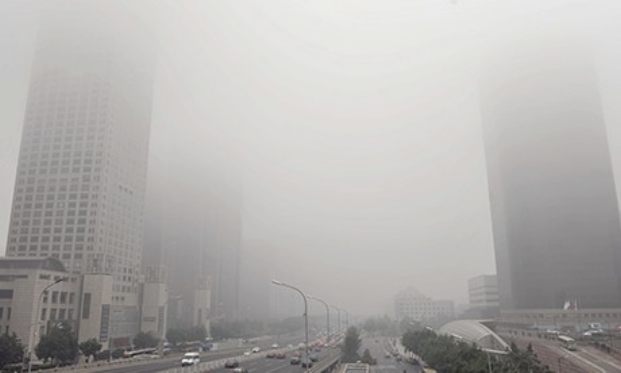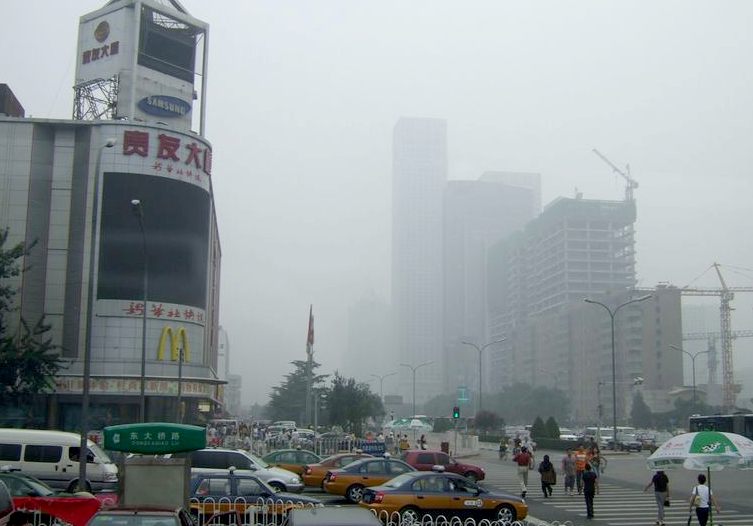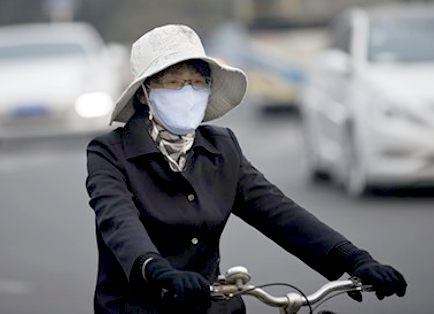|
CHINA - CANNONBALL INT. ZEV RUN™
|
||||||||||||||||||||||||||||||||||||||||||||||||||||||||||||||||||||||||||||||||||||||||||||||||||||||||||||||||||||||||||||||||||||||||||||||||||
|
As Beijing declared its first “red alert” for heavy smog in December 2015, closing schools and curbing car use, Chinese negotiators at the UN talks in Paris are being accused of trying to weaken the new global climate accord due to be finalized by Friday.
“It is very frustrating,” said one negotiator from a developed country after a meeting where he said Chinese officials had tried to water down efforts to create a common system for the way countries report to the UN on their carbon dioxide emissions and climate change plans.
China accounts for 27 per cent of carbon emissions and India is the fourth biggest emitter with just over 7 per cent of the global total. A public war of words intensified on Tuesday over another fraught reporting issue in the talks: a 2009 pledge wealthy countries made to deliver $100bn a year by 2020 to help developing countries deal with climate change.
Prakash Javadekar, India’s environment minister, told reporters developed countries “have not made much headway” towards the target and questioned a recent OECD study that concluded as much as $62bn in funding from public and private sources was delivered in 2014.
The Trans-China Cannonball ZEV Run is one of the longest road trips through arduous wilderness. Some of the distances between stopping points are over 200 miles, though you can of course make more stops to reduce the distance to 100 miles, etc. In addition, there are few fast charge points at the logical geographical recharging locations, which will mean significant time delays for vehicles that do not have a means to refuel other than mains electricity charging. Because of this the Trans-China scores high on the Cannonball International points system - compared to a trip across France or Japan.
China is rapidly developing renewable resources from wind and solar electricity that will ultimately benefit a change to a sustainable all electric economy for both economic reasons, the health of the nation and as a means to curb changing weather patterns.
Map of the Trans-China Cannonball International ZEV Run, one of the longest @ 3,925 kilometers of clean motoring adventure.
CANNONBALL INTERNATIONAL EV SERIES
The Cannonball International EV Run™ series is for battery or hydrogen fuel cell powered electric vehicles that are based on ordinary production vehicle running gear and must be capable of carrying at least one passenger. They may be solar assisted, provided that the solar panel area does not exceed four square meters - a rule that may be relaxed in subsequent years as we learn from experience. See the full Cannonball EV rules HERE.
These rules are designed to promote the development of an international EV infrastructure, as a means of accelerating the transition from IC engines to clean electric motors, especially in countries that do not have abundant sunshine, where support for non-solar assisted electric vehicles is all the more important.
An event for adventure capitalists
It's about time we had an EV compatible with battery or hydrogen fuel cell technology. The Ecostar DC50 by Bluebird Marine Systems Ltd may well be the vehicle that changes all that from 2015.
AI HUI QU - SHENZEN: TRANS-CHINA CANNONBALL ZEV RUN STOPS* 50mph
GOOGLE SUGGESTED ROUTE - Driving directions 60 HR TARGET (This route has tolls)
Ai Hui Qu - Heilongjiang
Shenzhen - Guangdong
BEIJING AIR POLLUTION
There are many theories on how China could best tackle its air pollution problem: it could shutter its factories, upgrade its emissions standards or, according to one Dutch artist, it could simply suck up the haze using a giant electromagnetic vacuum cleaner.
When winter descends upon China, with it come thick clouds of smog. In October 2013
officials shut down schools and major roads in the northeast city of Harbin after air pollution there reached dangerously high levels. For days, the city and its 11 million inhabitants
The smog has since subsided in Harbin, but the outbreak has revived longstanding debates across China, where rapid economic growth and a lingering dependence on coal have combined to deteriorate air quality at alarming rates. The government has made moves to address the issue with new regulations and emergency plans, but do these stand a chance of working.
Yet for all the promise that recent innovations may hold, experts say China's smog issues demand more drastic government action, pointing to the increasingly severe crises that the country has seen in recent years. In January, pollution levels in Beijing quite literally broke the scale, exceeding the index that the US embassy uses to monitor air quality. And recent research suggests that people in some regions are already starting to feel its effects.
A study published in July 2013 found that over the past two decades, coal pollution in northern China has cut life expectancy there by at least five years. On average, people living in the country’s southern regions live about 3.5 years longer than their northern counterparts, the paper reported. According to a study published in April, China's air pollution led to an estimated 1.2 million premature deaths in 2010 alone.
Pollution from electricity-producing coal plants are seen as the primary driver behind China's smog, which is why the country's colder
northern regions see worse outbreaks during the winter, when people begin heating their homes. Although the government has made
renewable energy a long-term priority, coal still provides an estimated 70 percent of China’s electricity. According to recent data
from the US Energy Information Administration, China continues to burn nearly as much coal as the rest of the world combined.
CANNONBALL INTERNATIONAL OFFICIAL ROUTES
LINKS:
http://www.mile-to-km.com/km-to-miles.php http://www.worldsolarchallenge.org/ http://www.discovery-campervans.com.au/adelaidedarwin.php http://www.familyonabike.org/other%20info%20pages/awards.html http://www.endtoenders.co.uk/ https://maps.google.com/ http://www.who.int/en/ VAUXHALL AMPERA endurance ev attempt 2010_ampera_e-revs http://www3.imperial.ac.uk/ http://www3.imperial.ac.uk/newsandeventspggrp/imperialcollege/newssummary/news_27-5-2010-12-26-15 http://www.formaplex.com/news/formaplex-launches-electric-car-world-record-attempt/ http://www.engadget.com/2010/05/31/racing-green-endurance-srzero-electric-car-to-make-16-000-mile-t/ http://www.rideacrossbritain.com/packages/end-to-end/ http://www.discoveradventure.com/challenges/land-s-end-to-john-o-groats-cycle http://en.wikipedia.org/wiki/Land%27s_End_to_John_o%27_Groats
|
||||||||||||||||||||||||||||||||||||||||||||||||||||||||||||||||||||||||||||||||||||||||||||||||||||||||||||||||||||||||||||||||||||||||||||||||||
|
This
website is Copyright © 2015 Bluebird Marine Systems
Limited.
The names Bluebird,
Cannonball EV Runs™, Ecostar DC50™, Utopia Tristar™ and the blue
bird in
flight
|
